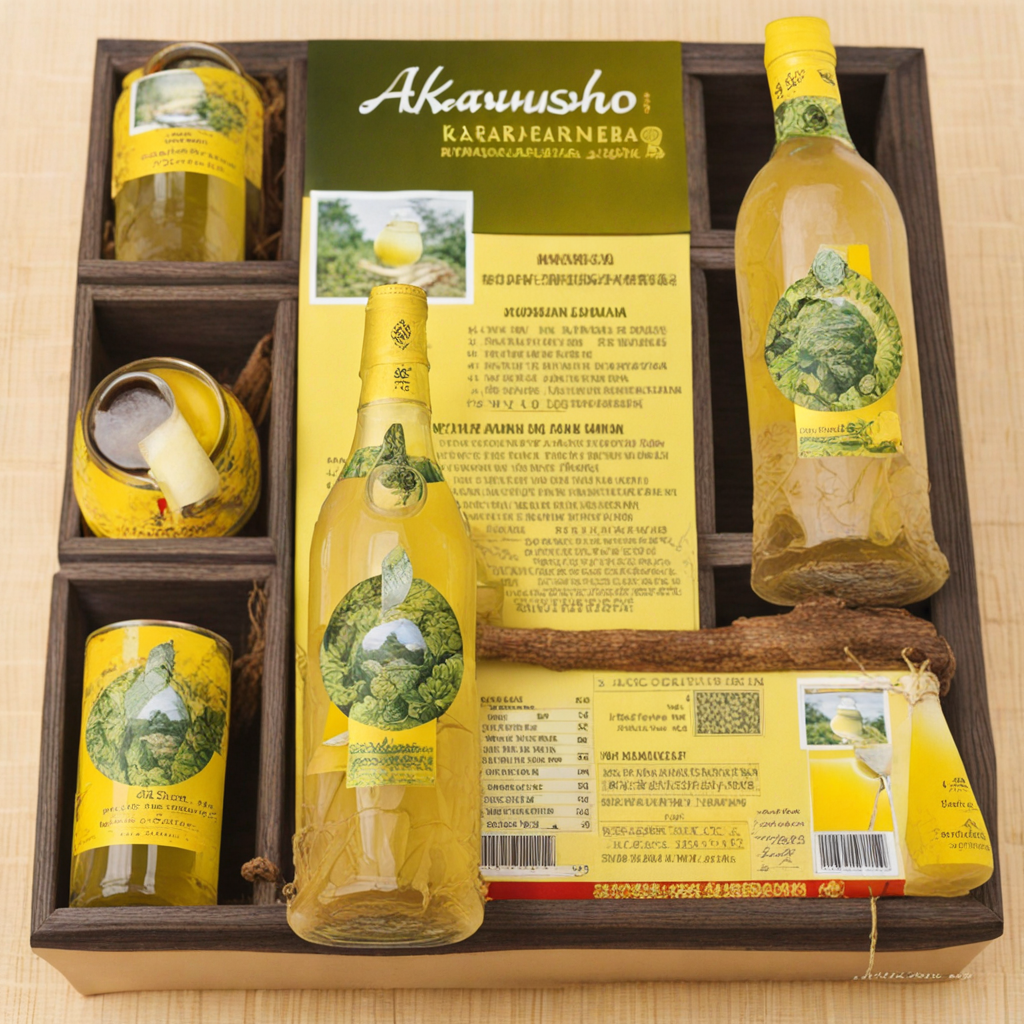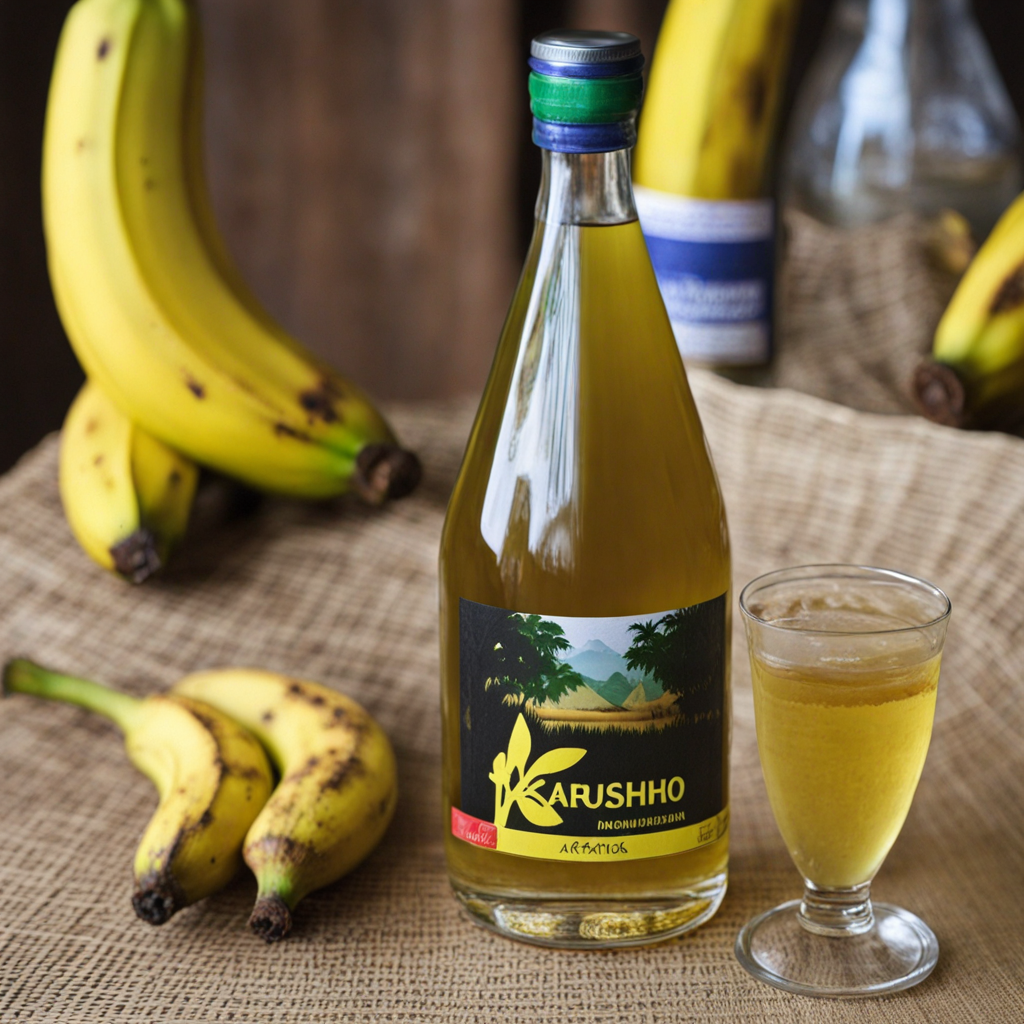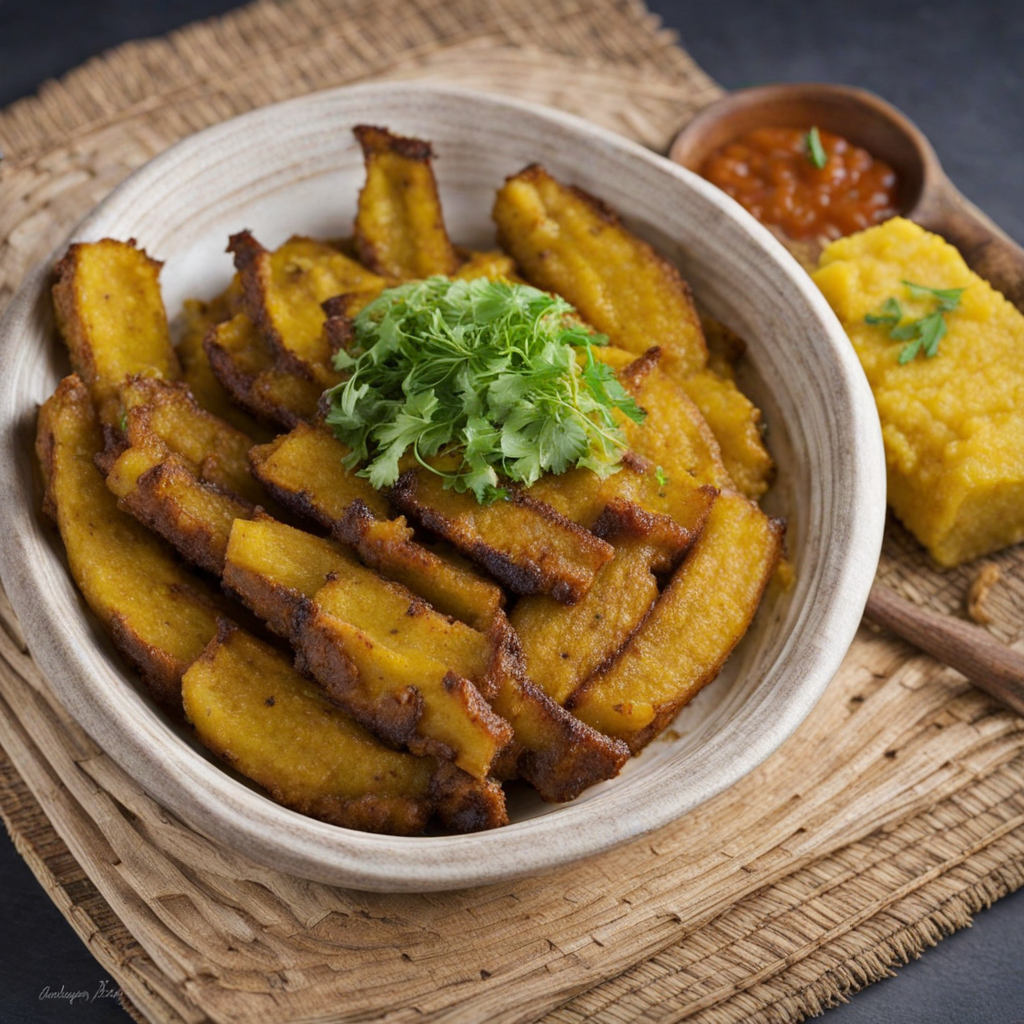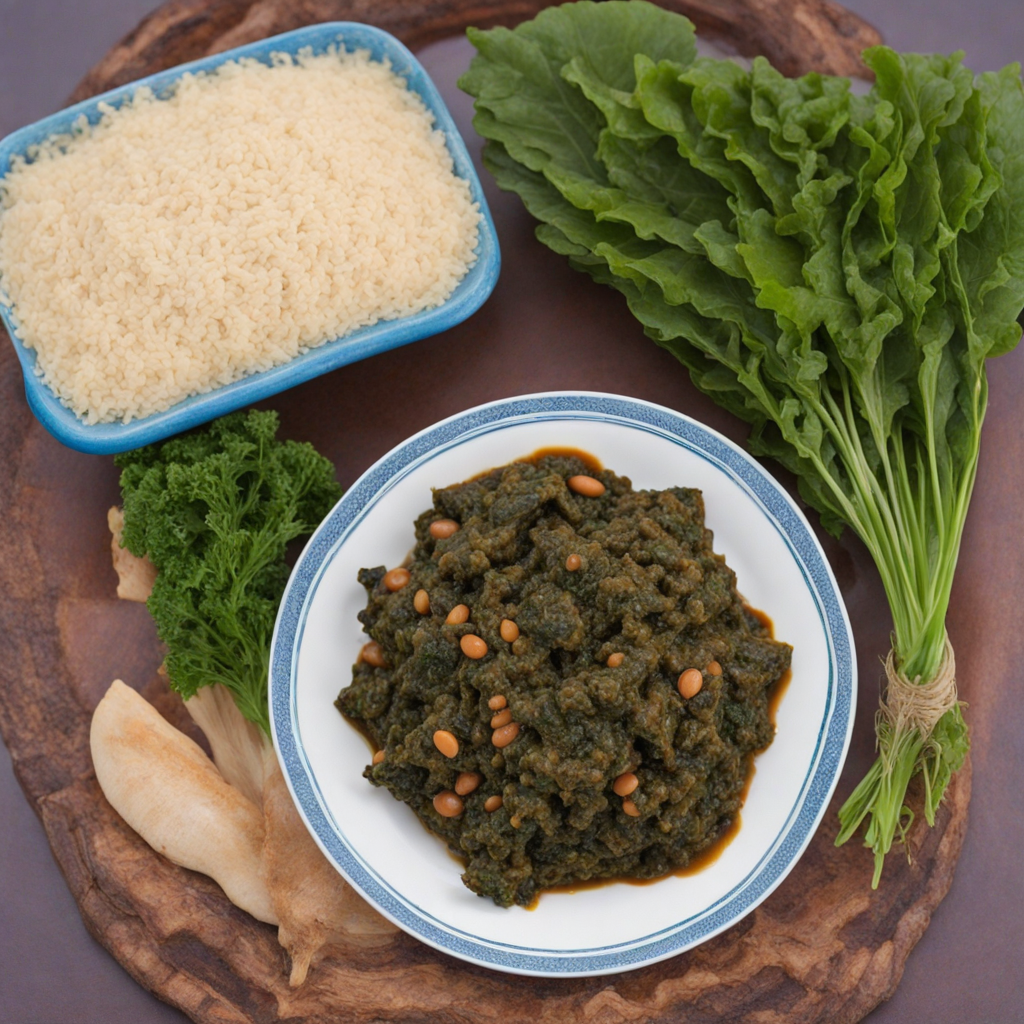Akarusho
Akarusho is a traditional Rwandan dish that showcases the country's rich agricultural heritage and vibrant flavors. At its core, Akarusho consists of a medley of local ingredients, primarily featuring groundnuts (peanuts) that are roasted and ground into a creamy paste. This nutty base is typically combined with a variety of vegetables such as spinach, beans, or sweet potatoes, creating a harmonious blend of textures and tastes that reflect the bountiful Rwandan landscape. The dish is often seasoned with local spices and herbs, enhancing its depth and bringing the elements together in a delightful way. The preparation of Akarusho is both an art and a communal experience, often involving families and communities coming together to source fresh ingredients from local markets or farms. The process of roasting and grinding the groundnuts is particularly significant, as it allows the natural oils to be released, adding richness to the dish. Once prepared, Akarusho is typically served warm, often as a side dish or a main meal, accompanied by staples like ugali (a maize porridge) or rice, making it a filling option that nourishes both body and soul. Akarusho not only stands out for its flavors but also for its cultural importance in Rwandan cuisine. It embodies the principles of sustainability and local sourcing, celebrating the ingredients that are readily available in the region. Enjoying Akarusho is an invitation to experience the essence of Rwandan hospitality, as it is often shared among friends and family during gatherings. This dish encapsulates the heart of Rwandan culinary traditions, making it a must-try for anyone looking to explore new and exciting tastes.
How It Became This Dish
Akarusho: The Heart of Rwandan Culture and Gastronomy Akarusho, a traditional Rwandan dish made primarily from pumpkin seeds and often enjoyed as a snack or a side dish, is a vibrant reflection of Rwanda's agricultural heritage, cultural practices, and communal spirit. Its origins can be traced back centuries, deeply rooted in the lives of the Rwandan people, and it serves as a testament to the significance of local ingredients and culinary traditions that have been passed down through generations. #### Origins and Ingredients The term "Akarusho" translates roughly to "little gift" in Kinyarwanda, a fitting name for a dish that embodies the generosity and communal values of Rwandan society. The dish primarily features pumpkin seeds, which are abundant in the region due to the prevalence of pumpkin cultivation. Pumpkins have long been a staple in Rwandan agriculture, thriving in the fertile volcanic soil of the country, particularly around Lake Kivu and the central highlands. In Rwandan culture, pumpkins symbolize abundance and fertility, making their seeds an important ingredient in local cuisine. Akarusho is often prepared by roasting the seeds until they are golden brown and fragrant, then lightly seasoning them with salt or spices. This simple yet delicious preparation method highlights the natural flavors of the pumpkin seeds and reflects the Rwandan philosophy of celebrating local produce. #### Cultural Significance Akarusho holds a special place in Rwandan culture, often associated with hospitality and communal gatherings. It is a common sight at social events, family celebrations, and traditional ceremonies. The act of sharing Akarusho among friends and family serves as a symbol of unity and togetherness, reinforcing the bonds within communities. In many Rwandan households, Akarusho is prepared during significant life events, such as weddings, births, and the harvest season. It is not uncommon for families to gather to roast pumpkin seeds together, turning the preparation of Akarusho into a communal activity. This practice fosters a sense of belonging and strengthens relationships, as families pass down recipes and cooking techniques to younger generations. Moreover, Akarusho is often enjoyed during the national holiday of Umuganura, or the Harvest Festival, which celebrates the first fruits of the season. This festival is deeply rooted in Rwandan history and emphasizes the importance of agriculture, gratitude, and community. During Umuganura, various dishes, including Akarusho, are prepared and shared among families, showcasing the bountiful harvest and the resilience of Rwandan farmers. #### Evolution Through Time While Akarusho remains a beloved traditional dish, its preparation and consumption have evolved over time. In the past, Akarusho was primarily made using hand-ground seeds, requiring significant labor and skill. As modernization took hold, many households began using store-bought pumpkin seeds, which allowed for quicker preparation. This shift has made Akarusho more accessible to a wider audience, and it can now often be found in markets and eateries throughout Rwanda. The rise of culinary tourism in Rwanda has also influenced the way Akarusho is perceived and enjoyed. As international visitors become more interested in Rwandan cuisine, local chefs have begun to experiment with the dish, incorporating contemporary flavors and techniques. Some have introduced innovative variations, such as spiced Akarusho with chili or sweet versions with honey, appealing to diverse palates while maintaining the essence of the traditional recipe. Moreover, the growing emphasis on health and nutrition has brought Akarusho into the spotlight as a nutritious snack option. Pumpkin seeds are rich in essential nutrients, including magnesium, zinc, and healthy fats, making them a popular choice among health-conscious consumers. This newfound recognition has led to an increase in the availability of packaged Akarusho in grocery stores, allowing for its enjoyment beyond traditional settings. #### Akarusho in Contemporary Rwanda Today, Akarusho is more than just a snack; it is a symbol of Rwanda's culinary identity. The dish reflects the country’s agricultural roots and the importance of sustainable practices in food production. As Rwanda continues to develop and modernize, the emphasis on local, organic ingredients has become a focal point in the culinary scene. Akarusho embodies this ethos, showcasing the beauty of homegrown produce and the simplicity of traditional cooking methods. In recent years, initiatives aimed at promoting local agriculture and culinary arts have further bolstered the significance of Akarusho. Organizations focused on food security and sustainability have highlighted the importance of traditional crops like pumpkins, encouraging farmers to cultivate indigenous varieties that have been part of Rwandan heritage for generations. Additionally, Akarusho is increasingly featured in culinary events and competitions, where chefs showcase their creativity while honoring traditional flavors. Food festivals celebrate Rwandan cuisine, and Akarusho often takes center stage, allowing chefs to present their unique interpretations of this classic dish while engaging the public in the rich history behind it. #### Conclusion Akarusho is more than just a dish; it is a narrative woven into the fabric of Rwandan culture, history, and community. Its origins in the agricultural practices of the region, combined with its cultural significance during communal gatherings and celebrations, make Akarusho a cherished part of Rwandan identity. As it evolves with the times, the dish continues to honor traditional values while embracing modern influences, ensuring that it remains a beloved staple in the hearts and homes of Rwandans today. Through Akarusho, the story of Rwanda’s resilience, unity, and rich agricultural heritage is told, making it a dish worthy of celebration in both local and global contexts. As Rwanda continues to embrace its culinary heritage, Akarusho stands as a delicious reminder of the importance of community, tradition, and the bounty of the land.
You may like
Discover local flavors from Rwanda







